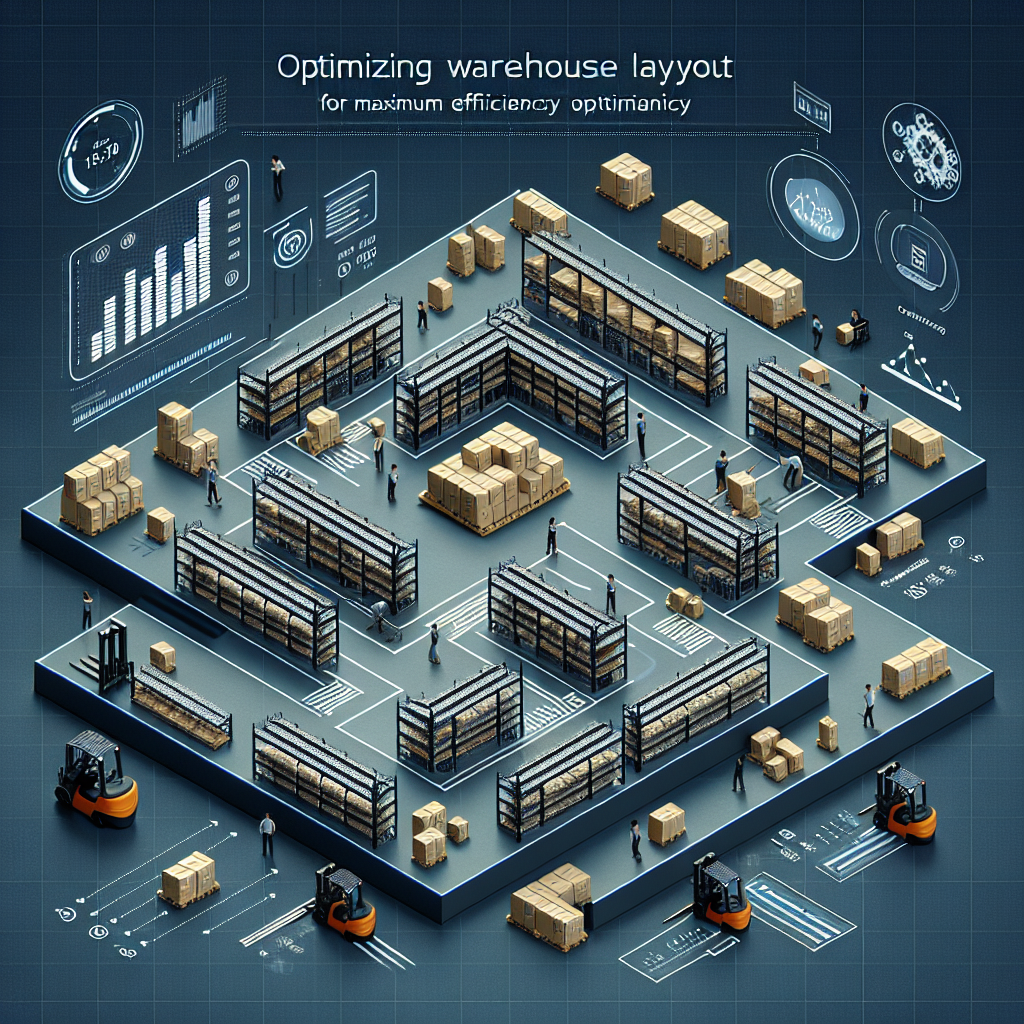In today’s fast-paced supply chain environment, the efficiency of a warehouse can significantly affect a business’s bottom line. An optimized warehouse layout not only speeds up the movement of goods but also enhances employee productivity and safety. In this article, we’ll delve into the key strategies for optimizing warehouse layouts, exploring how they can lead to maximum efficiency.
Understanding Warehouse Layout
Before we dive into optimization strategies, it’s essential to understand what a warehouse layout entails. Essentially, the layout is the arrangement of physical space in a warehouse, including storage areas, workstations, pathways, and shipping zones. A well-planned layout ensures that goods move swiftly through the warehouse, minimizing delays and improving workflow.
The Importance of an Effective Layout
A poorly structured warehouse can lead to various inefficiencies, including longer picking times, increased labor costs, and higher error rates in order fulfillment. By optimizing your warehouse layout, you can mitigate these issues, resulting in improved operational performance and customer satisfaction.
Key Strategies for Optimizing Warehouse Layout
1. Assess Your Current Layout
The first step in optimizing a warehouse layout is to assess the existing setup. Look at the flow of goods from receiving to shipping and identify bottlenecks or areas where space is not being utilized effectively. Engaging your warehouse team in this assessment can provide valuable insights, as they are familiar with the day-to-day operations.
2. Determine Space Requirements
Understanding the space requirements for different products is crucial. Categorize items based on size, weight, and demand frequency. Utilize techniques like ABC analysis, which involves classifying products into three categories: A (highly demanded), B (moderately demanded), and C (rarely demanded). This helps in placing frequently picked items closer to shipping areas, reducing travel time.
3. Optimize Storage Solutions
Choosing the right storage solutions is a pivotal aspect of warehouse design. Opt for shelving systems, racks, and pallets that best suit the nature of your products. Techniques such as vertical storage can help maximize limited space, while mobile shelving systems can improve flexibility and adapt to changing needs.
4. Streamline Picking Processes
Picking is often the most time-consuming operation in a warehouse. To streamline this process, consider implementing a zone picking system where items are grouped by location. Additionally, using technology such as barcode scanners or pick-to-light systems can enhance accuracy and speed, ensuring orders are processed efficiently.
5. Establish Clear Pathways
Clear pathways should be established for both pedestrian traffic and material handling equipment. This not only reduces the risk of accidents but also promotes a smoother workflow. Designate specific routes for forklifts and carts, and regularly review traffic patterns to identify potential congestion areas.
Leveraging Technology for Optimization
6. Warehouse Management Systems (WMS)
In the digital age, investing in a Warehouse Management System (WMS) can revolutionize your operations. A WMS helps track inventory in real-time, forecast demand, and manage labor schedules effectively. By integrating WMS with your layout strategy, you can achieve a cohesive system that promotes efficiency.
7. Automation and Robotics
Automated systems, such as robotic pickers and conveyor belts, can significantly speed up operations. While the initial investment can be substantial, the long-term savings in labor costs and increased throughput make automation a worthwhile consideration for many warehouses.
Employee Training and Engagement
8. Invest in Training
An optimized layout is only effective if employees are adequately trained to navigate it. Conduct regular training sessions that familiarize your team with new systems, safety protocols, and best practices. An engaged workforce is more likely to embrace changes and contribute to continuous improvement.
9. Gather Feedback
Ongoing feedback from employees can highlight areas for further improvement. Encourage an open dialogue where team members can share their thoughts on the layout and operations. This not only boosts morale but also fosters a culture of collaboration aimed at achieving maximum efficiency.
Regular Evaluations and Adjustments
10. Continuous Improvement
Finally, remember that optimizing a warehouse layout is not a one-time effort. Regular evaluations should be conducted to identify new challenges arising from changes in business operations or product lines. Adopt an agile mindset, ready to adapt the layout as necessary to accommodate growth or shifts in demand.
Conclusion
An efficient warehouse layout is instrumental in driving productivity and enhancing customer satisfaction. By assessing your current layout, leveraging technology, training employees, and remaining adaptable, you can significantly improve the performance of your warehouse. Embracing these strategies will not only optimize space but also pave the way for a streamlined, efficient warehousing operation that supports your business’s growth and success.
Maximizing efficiency in your warehouse layout is more than just a logistical consideration; it’s an opportunity to humanize your processes and create a work environment that fosters productivity and safety. Take the time to invest in these optimizations, and watch as your operational performance improves.


